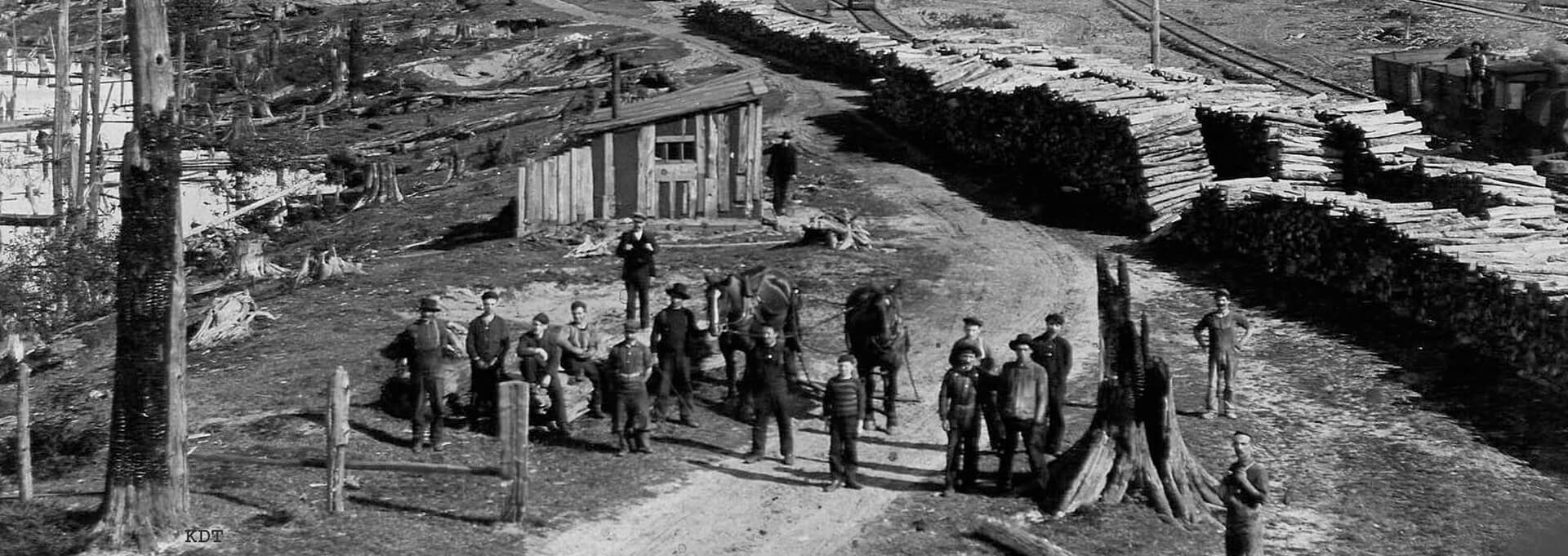There was once a time when the village of South River was known as the Charcoal Centre of Canada. It was a reputation earned by the small but bustling village following the establishment of the Standard Chemical Company factory – one of six plants built by the Montreal-based company in Ontario during the early 1900s.
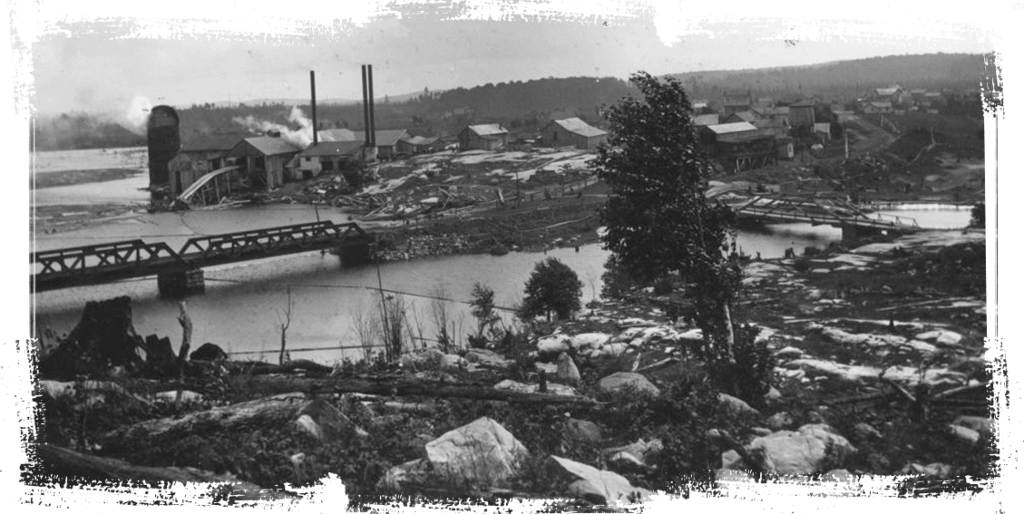
South River Lumber Co Saw Mill at South River (1903)
Built in and around 1906 at the east end of the village, the factory employed upwards of 500 workers in both the forests and the chemical plant. The plant would use cordwood to make wood alcohol, formaldehyde, and other chemicals, which in turn created a by-product: charcoal. This eventually became the primary product churned out at the factory. It was sold mostly for use in charcoal barbecues, which were quite popular at the time.
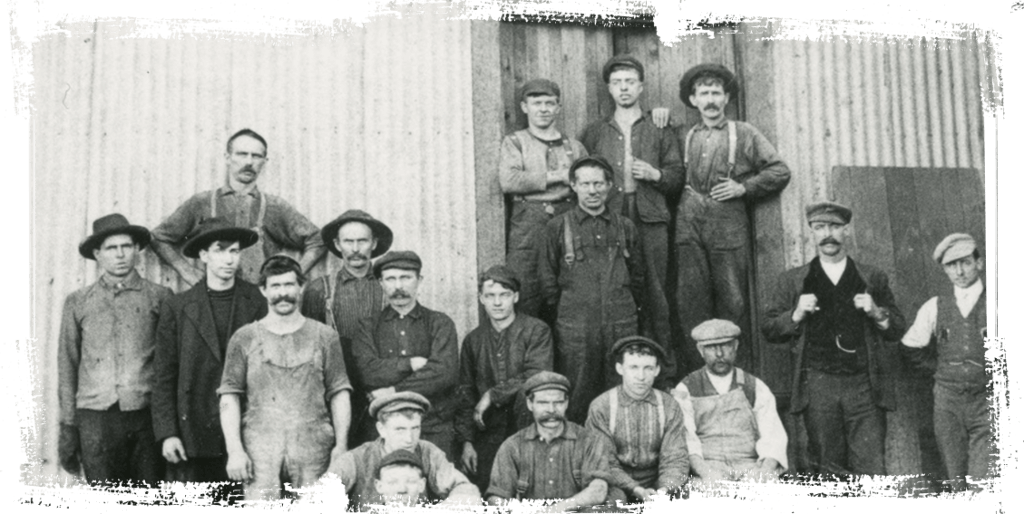
Standard Chemical Co. workers. Peter Murdock and M.Grieves are wearing clean clothes with a vest and overcoat
Cordwood arrived at the factory by rail from other towns along the line, and from the company’s own timber lots by a Phoenix Steam Hauler. In 1917, a 1,000-foot trestle bridge was built to span the South River and about four miles of railway track was laid, at which point the Steam Hauler was retired and a company train was then used to haul the cordwood to the factory. Around 1925, the trestle was rebuilt and a sawmill and planing mill were added to the operation.
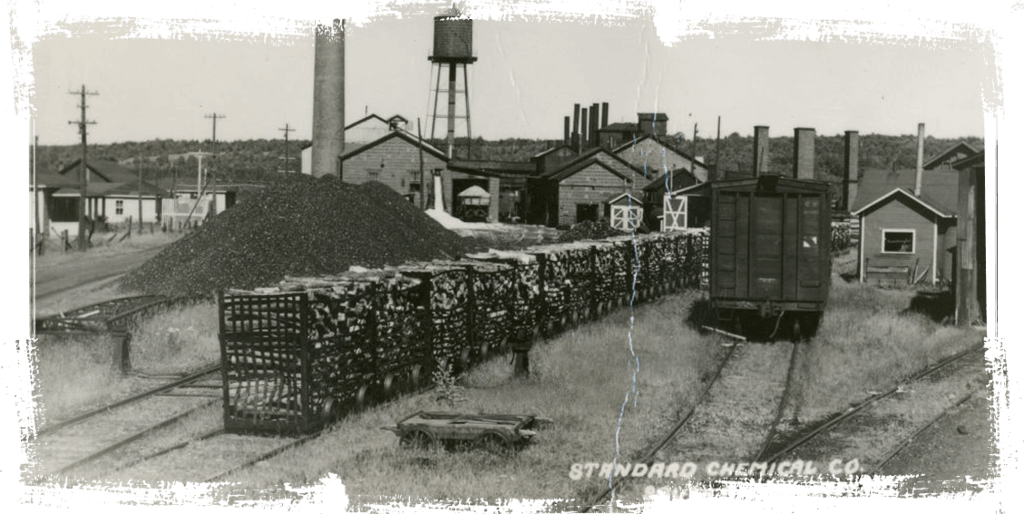
South River’s Tom Thomson Park was once a very different sort of place! 1940 Standard Chemical Co. was home here.
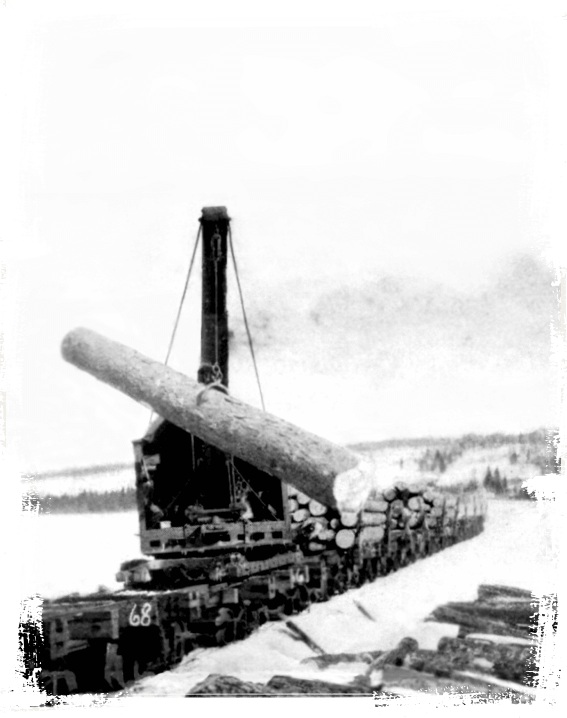
Fun Facts
Charcoal is made by baking or carbonizing hardwood like beech, birch or maple. Brought in on railway buggies, the wood was baked at 600 degrees in ovens with only a small opening for gas to exhaust. In the process, water, acetic acid and alcohol were also harvested from the wood.” and “Before it was sold, the charred mass of charcoal was cooled and then broken into smaller, more manageable pieces..
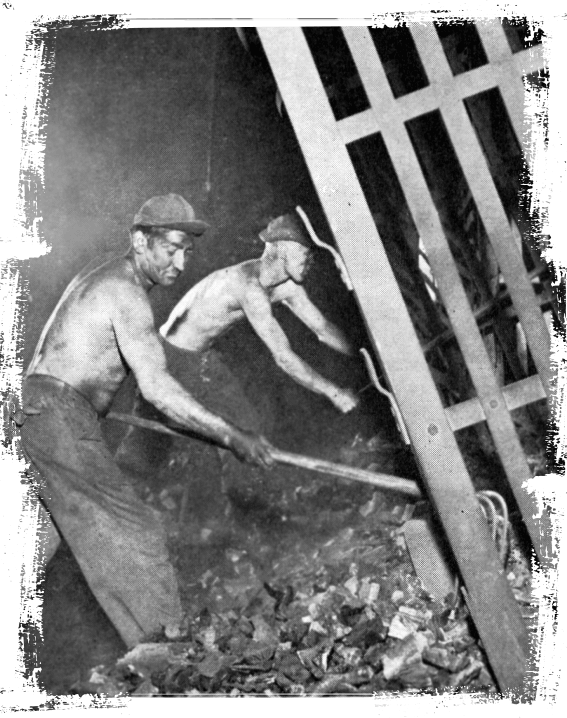
The chemical plant was eventually sold to Dominion Tar & Chemical, and then resold again to Hay & Company before ceasing operations completely shortly after 1967, when propane barbecues took over the market from their charcoal predecessors. Several of the ovens used by the Standard Chemical Company remain in the ground today.
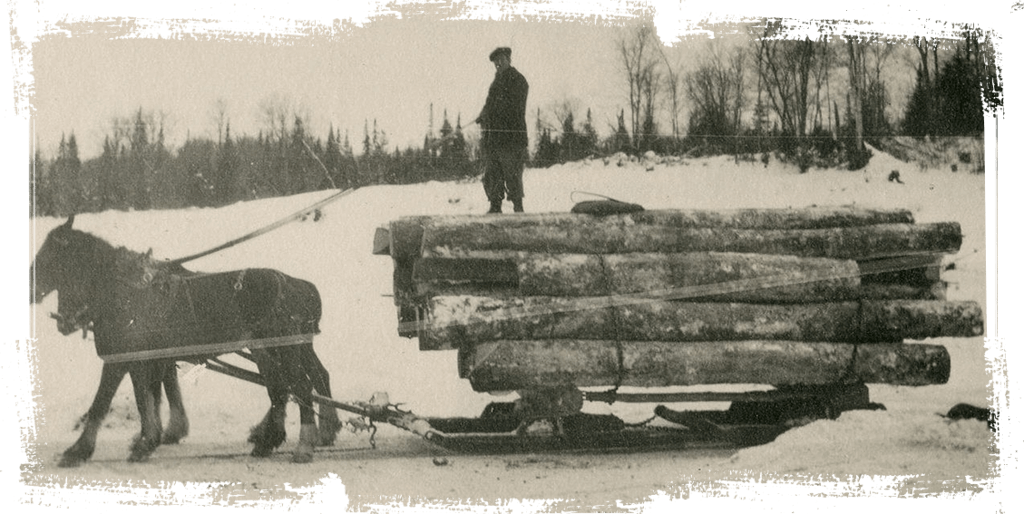
en routh to Standard Chemical c 1925
Arthur Godfrey Peuchen, the president of the Standard Chemical Company from 1897 until 1914, was often abroad in England, France and Germany, and as such, was on board the Titanic.
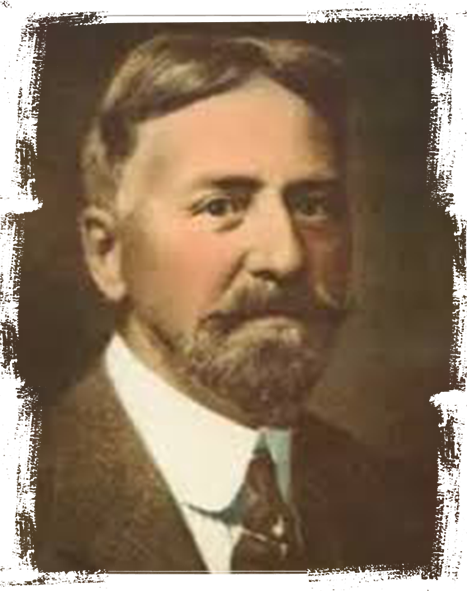
Arthur Godfrey Peuchen, president of Standard Chemical Co.
As passengers and crew prepared to abandon ship, it became evident that there weren’t nearly enough lifeboats but Peuchen, a military man and yachtsmen at the time, ended up taking command of Lifeboat #6 and rowed 20 or so people to safety. Among those in his lifeboat was was an American socialite and philanthropist Margaret Brown, known posthumously as “The Unsinkable Molly Brown”. She unsuccessfully encouraged the crew in Lifeboat No. 6 to return to the debris field to look for survivors. Peuchen was later scorned as a coward for having not gone down with the other men on the ship.

